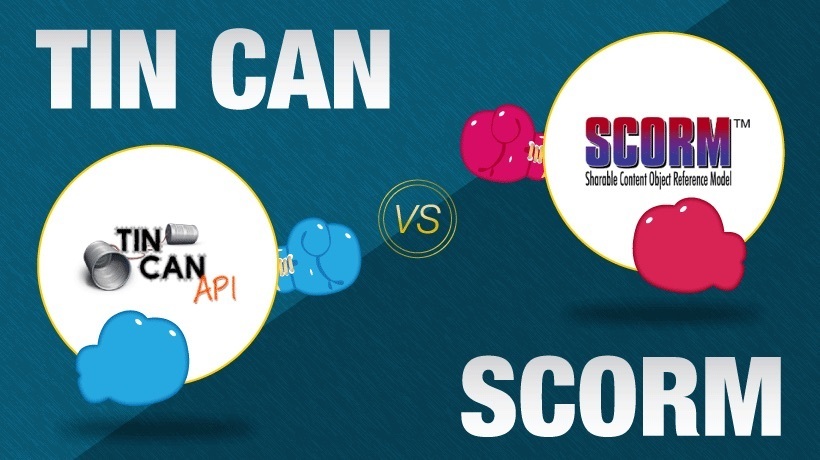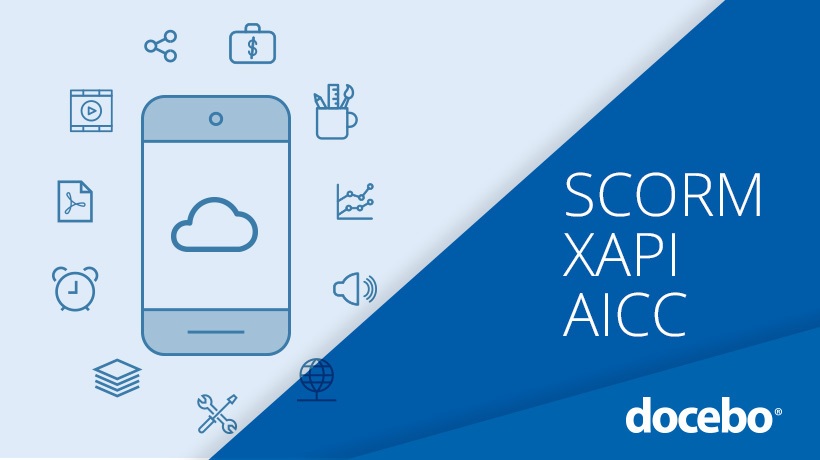SCORM VS xAPI: Getting Rid Of The Old To Make Way For The New
TinCan, xAPI or experience API, whatever you call it (and I personally go with xAPI), is the front runner to succeed SCORM within the eLearning world. Now, it’s worth stating here and now, that this is not a sure thing, but I believe it’s fair to say it’s the prevailing opinion. So, let’s look at how and why this is happening, and what it means for us, our learners, and the wider industry.
Why Is SCORM Dying?
Since its birth, back in 2000, SCORM has gone through several incarnations; 7 to be exact, with the last one being released back in March 2009, over 10 years ago. At the time, SCORM offered a fantastic, universal and extremely versatile reporting and recording standard for the eLearning industry, which ensured compatibility across most platforms.
However, SCORM has always been a limited beast, mostly due to its complexity, something the modern computing world has little time for. The standard was also built in the early days of eLearning design when highly linear content and quiz format were still the norms. Time and eLearning design have moved on, but SCORM hasn’t. Increasingly, UX focused designs, which encourage free movement through content and testing or non-quantitative testing, have rendered SCORM unable to reliably and usefully record learner data.
Over time, several new standards have been born. IMS CC and LTI have proven popular in academic circles, but have made little impact in the corporate sector, with most organizations still relying on SCORM 1.2 or 2004 reporting. Now though, things are starting to change, as more and more businesses see what’s possible, SCORM’s time in the sun may be over.
What Is xAPI?
To understand why SCORM is dying, you need to understand its killer. xAPI is the "new" reporting standard on the block. It actually showed up back in April 2013, but it has taken a while to gain traction in a slowly evolving industry. In truth, xAPI offers eLearning designers full reporting, in terms of statements about the learner and their actions and doesn’t require an LMS. The standard is also a cross-domain, removing another limitation of SCORM. xAPI also allows for the recording of team learning and course completion without a web browser. In an increasingly mobile-focused world, these changes are going to really give xAPI the edge.
Another big advantage is xAPI’s ability to record multiple scores for a learner in the single object, unlike SCORM, which can only store the most recent single score. This gives organizations a much clearer picture of learner performance. This same functionality, also, allows for clearer tracking of non-traditional video and social learning materials.
What About cmi5?
Cmi5 is actually a big reason for xAPI’s recent growth in users. Cmi5 acts as a companion to xAPI, making it compatible with traditional LMSs previously unable to work with the new standard reporting language. For many, this was the last barrier to move away from SCORM; and, so we’re now seeing organizations make the transition. While cmi5 does limit some of the data being shown in your LMS, in order to gain compatibility, rest assured that all the data is still there, lurking in the background. All you’ll need to do is harvest it. This is a great middle-ground for those wanting to jump ship, but not ready to overhaul their entire LMS/LXP infrastructure.
As a companion to xAPI, cmi5 will naturally evolve, and as traditional LMSs become a thing of the past, they will eventually die off. Moving to it now, however, guarantees forward compatibility and starts the journey toward a new level of learner tracking.
So, What’s Next?
What comes next is a great question and, in my opinion, anyone who says they know is lying. However, I believe we’ll see a big shift away from SCORM within the next 2 years, driven by increased demand for data in the business world and a focus on learner experience from the L&D industry. In short, now is the time to be brave, evaluate your SCORM library and begin the journey of conversion and replacement. The good news is that modern authoring tools, such as Storyline and Captivate, are already making the jump as easy as republishing your course. LMS providers are also waking up to the change, with TinCan or xAPI now being given equal footing with SCORM.
The possibilities made available through xAPI are enormous, a new standard allows us, as designers and developers, to work in ways that put the learner, not the software limitations, at the center of our content. The worlds of non-linear learning, serious game, and behavioral tracking are now open to us. This discussion, like the evolution of our industry, is far from over; evolving is the key to survival. The dinosaurs didn’t make the cut, and now the time has come for SCORM to join them.
Have you used xAPI or are you considering it? What plans do you have? What has worked and what hasn’t? Let’s open the debate to everyone in the comments section! Share your thoughts!









